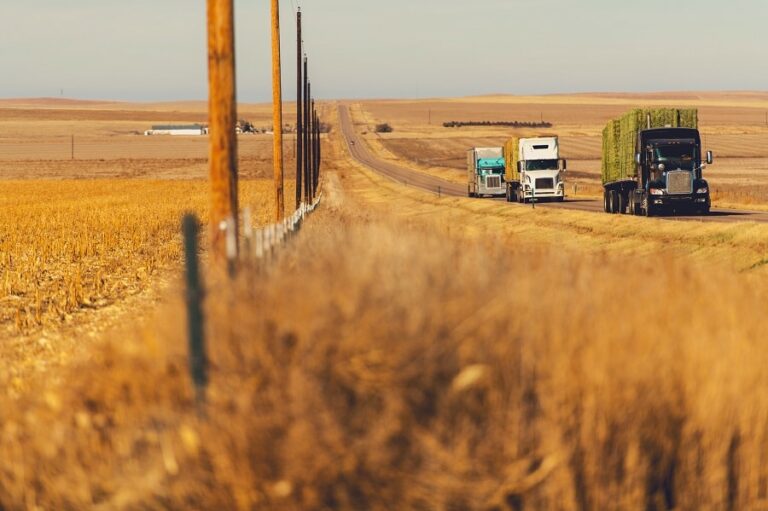As the world becomes more committed to environmental sustainability, one industry that comes under constant criticism, is the trucking industry.
In America, there are currently 36 million trucks registered and used for business purposes (not including those used for government and agricultural production and distribution). Of that number, there are currently 3.68 million Class 8 trucks (which includes tractors and straight trucks).
Source: Web 2019 trucking.org
The use of fossil fuels is one of the leading contributors to greenhouse gases and global warming. But what many businesses and consumers do not realize, is that the trucking industry has been working hard to reduce fuel emissions for more than two decades.
In this article, we’re going to share some exciting news about the goals and progress that the American trucking industry has been making, to improve fuel efficiency and improve utilization, reduce emissions from heavy trucks, and explore alternative fuels that are more sustainable for the environment.
The North American Council for Freight Efficiency Annual Study Released January 6, 2020
Working with 21 North American fleets that operate Class 8 trucks for logistics and drayage services, the North American Council for Freight Efficiency released their annual report which had some very encouraging news. For the past two years, the fuel economy of trucks has increased by .5% with 2018 data revealing heavy trucks averaged 7.27 mpg.
While that number doesn’t seem at first to be a big deal, the trend shows the same improvement on a year by year basis. In other words, the trucking industry is making fuel efficiency gains every single year, as it works hard to reduce emissions with improved technology. The NACFE also indicated that the adoption of fuel-efficient technology has increased from 17% of fleets (2003) to 44% of fleets in 2018.
Another factor to consider, is that many states have actually implemented speed increases and raised minimum speed levels on major highways. Trucks have optimal fuel efficiency performance at about the 60 mile per hour range.
Anything over 60 mph burns more fuel, and increased speed requirements on highways has impacted the overall statistics on fuel efficiency for the trucking industry in a negative way as a result.
Will drivers who are under increasing pressure and HOS regulations opt to drive at a slower speed, to save on fuel? Not likely; “if the wheels aren’t turning, you’re not earning” is at the culture of the trucking industry. Most drivers know their trucks, and the optimal speed for fuel efficiency and try to balance that within increasing highway speed limits. An increase of highway speed from 55 mph to 75 mph can raise fuel consumption by 20% on average, depending on other factors like engine condition and age, average load weight and idling time.
7 Small Changes Can Boost Fuel Efficiency in Drayage and Logistics
Routine maintenance is essential for truck drivers (and also a legal requirement for CDL licensure in good standing). In addition to maintenance, there are a few steps you can take to reduce emissions and conserve fuel as a truckdriver.
- Reduce or eliminate (as much as possible) OOR miles. Inefficient delivery schedules, detours and lack of solid route planning can add to the amount of fuel expended on every trip. There are many smartphone apps for truckers that use AI and GPS combined, to provide the most fuel efficient and time-saving delivery.
- As we mentioned, speed is a big factor in fuel efficiency. Most American highways have a speed minimum of 55 mph. Did you know that truckers can improve their gas mileage by up to 15% on every trip, if the average 55 mph instead of 65 mph? It also substantially improves safety, particularly for overweight loads.
- Monitor your idling time. If the truck isn’t moving, and you are exiting the vehicle, shut off the engine not only for safety but to substantially reduce your fuel consumption. Stopping for a HOS rest break? You do not need to have the big rig running to cool your cabin for a nap, or to watch tv and eat. Equip your truck with a solar power and commercial battery converter instead. It can power a plug-in air conditioner, your electronics and more, without draining your tank during rest-breaks for cross-docking.
- There is a new kind of cruise control technology out there that’s really helping truckers reduce their fuel costs. Install a predictive cruise control device. Fleet studies in the United States have shown it can reduce fuel consumption by as much as 35%!
- Consider investing in low-rolling-resistance dual tires on tractors, which have been show in studies to reduce fuel usage by 21%.
- Paint your tractor a lighter color. Sure, we live for those amazing dark and decorative paint jobs, but did you know that painting your truck a lighter color helps absorb less solar heat, and reduce evaporation of fuel? It can help you shave 18% off your fuel costs.
- Ask your truck technician about a 2-speed modulated cooling fan clutch, which can decrease your fuel consumption by 10% to 27.6% according to recent studies.
When you look at the percentage of fuel savings you can achieve as an owner-operator, by investing in some new equipment and modifying your route planning, it adds up to increased profitability and, you’ll be doing your part to help the trucking industry reduce emissions and air pollution.



